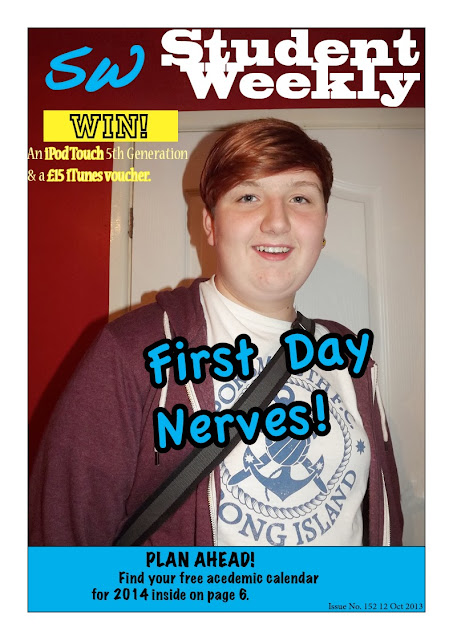

These two magazine front covers contain great images which are very appropriate for the individual magazines. The first (Vanity Fair) uses the rule of thirds to compose their image. Looking at the whole image, the subject is along the right vertical third line, and her legs are along the bottom horizontal line. Although when you look at her face, you can see that the text almost crops the rest of the image, leaving her arm and face. With the 'cropped' image, her eyes are along the top third, her head on the left third and her arm starts along the bottom third. The use of lines is very good as they have used her body to give perspective. Her arms and legs create lines, giving a accurate perspective on the proportion of her body. The angled arms and legs draw your attention to her face, making it the focal point. The face is clearly the focal point as it is the lightest part of the image. She is in a black outfit and the background is grey, so that helps with making her face stand out from the rest of the image. The photographer was a little lower than the subject as you can see that she is making eye contact, but is looking down at the reader.
The second magazine (The Source) uses rule of thirds to divide up the image used for the front cover. The eyes of the subject (even though they are closed) line up with the top line of the rule of thirds grid. The gun is almost on the bottom third line. Even though the image is fairly central, it still uses the rule of thirds well. The text either side of the subjects face seems to crop the image, leaving you to focus on his face. You can split it up into thirds, as his eyes sit on the top third, his lips are along the bottom and then both his eyes are on separate vertical lines on the grid. For lines, the gun creates a line which you follow up to look at the subjects face. The straps on his vest also do a similar thing, making you look up. The angle that the photo was taken at is pretty straight on, although the subject is looking up slightly, looking like the photo was taken from a lower angle. The focal point is his face as it is one of the brightest areas. It is surrounded by darker aspects of the image, making it stand out a lot more. You are also lead to focus on the gun, which is also bright and visible. These two points would probably be the two fighting for your eyes attention. The last thing you may focus on would be the text to the left of the image 'The Game' and possibly 'suicide is not an option'. These stand out as they are a completely different colour to the image behind.





